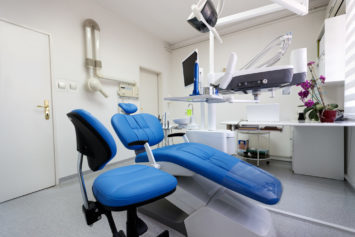In issuing its final Effluent Limitations Guidelines and Standards for the Dental Category ((ELGs), June 14, 2017, Federal Register (FR)), the EPA faced a unique regulatory challenge because of the large number of dental offices subject to the ELGs and very small size of most of these offices. Accordingly, in the ELGs, the Agency took a low-key approach to regulation. The main requirements are that dental offices must use amalgam separators to capture waste mercury, comply with two best management practices to ensure the mercury is properly captured, and submit a onetime report to the local wastewater control authority with information about the separator and the size of the office.
The EPA further simplified matters by giving existing dental offices more than 3 years—until July 14, 2020, to be in compliance with the ELGs. All new offices must comply with the regulations upon office start-up.
While the ELGs are relatively simple, dental offices will still be subject to penalties if they are found in noncompliance. Offices, and particularly offices that are not accustomed to complying with environmental regulations, should study the ELGs carefully, bear in mind that their states or the publicly owned treatment works (POTWs) to which they discharge may impose additional requirements, and ensure that their amalgam separators are compliant with the EGLs and are in good working order before the compliance deadline arrives.
130,000 Offices
The Dental ELGs are unique among the EPA’s categorical regulations under the Clean Water Act’s National Pollutant Discharge Elimination System (NPDES) and, in some ways, among all Agency regulations. The ELGs affect an extraordinarily populous sector—about 130,000 dental offices nationwide. By comparison, the Metal Products and Machinery Point Source Category, one of the next-largest categories subject to the ELGs, comprises approximately 63,000 facilities (EPA’s estimate in its 2001 proposed ELGs). The U.S. Census Bureau estimates that there are about 115,000 gas stations nationwide, but gas stations are not among the 59 sectors subject to federal ELGs.
A Major Threat to Health
Regulation of dental offices was also a challenge because most are microbusinesses. The Agency estimated the average per-office number of employees at just over six. Historically, the EPA does not regulate businesses this size both because the Agency prefers to direct its limited resources at larger facilities and because very small businesses typically do contribute significantly to pollutant loads.
But pollution from dental offices is an exception because of the presence of mercury in dental amalgam. Even in very small amounts, mercury is bioaccumulative in aquatic organisms; toxic to fetuses and children in groups who engage in subsistence fishing; and, when detected in water bodies or fish, the reason for many fishing advisories as well as outright fishing bans.
The EPA estimated that compliance with the final Dental ELGs would reduce the nationwide POTW discharge of dental mercury to surface water from 1,003 pounds (lb) to 11 lb.
States Established Controls
In developing the Dental ELGs, the EPA was aided by examples set by the American Dental Association (ADA) and some states and local governments. The ADA has encouraged its members to voluntarily make use of amalgam separators. Also, in the 2017 final rule, the EPA noted that 12 states and at least 18 localities have established mandatory programs to reduce discharges of mercury to POTWs, also primarily through the use of amalgam separators.
Efficiency, Size, and Repair
Under the Dental ELGs, dental offices must ensure that:
- The installed separator achieves 95 percent amalgam removal efficiency. Generally, this efficiency level can be achieved with separators that are compliant with either the American National Standards Institute (ANSI) American National Standard/American Dental Association (ADA) Specification 108 for Amalgam Separators (2009) with Technical Addendum (2011) or the International Organization for Standardization (ISO) 11143 Standard (2008) or subsequent versions.
- The separator is sized to accommodate the office’s maximum discharge rate of amalgam process wastewater.
- All separators are inspected in accordance with the manufacturer’s operating manual to ensure proper operation and maintenance and to confirm that all amalgam process wastewater is flowing through the amalgam retaining portion of the separator.
- In the event an amalgam separator is not functioning properly, the separator is repaired consistent with the manufacturer’s instructions or replaced with a new compliant unit as soon as possible, but no later than 10 business days after the malfunction is discovered.
- The amalgam retaining units are replaced in accordance with the schedule in the manufacturer’s operating manual or when the amalgam retaining unit has reached the maximum level as specified by the operating manual, at which point the amalgam separator can perform to the specified efficiency, whichever comes first.
BMPs
Regarding best management practices (BMPs), the Dental ELGs, first, prohibit the use of oxidizing line cleaners (mainly bleach, chlorine, iodine, and peroxide that have a pH lower than 6 or greater than 8.5. These cleaners can dissolve mercury and render separators ineffective. The second BMP prohibits flushing waste dental amalgam into any drain.
The EPA provides additional information about the Dental EGLs here.

